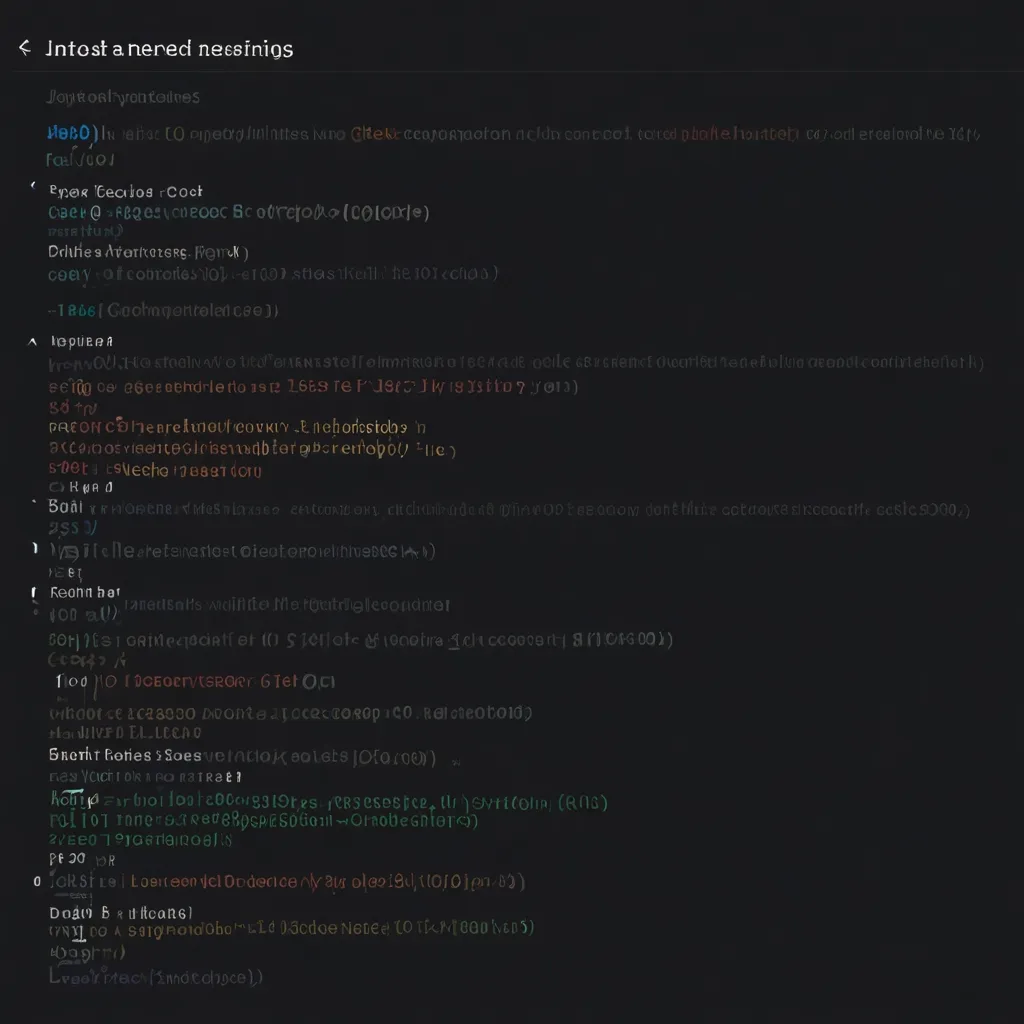Cross-platform mobile development has become increasingly important in today’s digital landscape. As a developer, I’ve found that creating applications that work seamlessly across multiple platforms is both challenging and rewarding. In this article, I’ll share five effective strategies that have helped me streamline my cross-platform development process and produce high-quality apps for various devices.
- Choose the Right Framework
Selecting an appropriate framework is crucial for successful cross-platform development. Over the years, I’ve experimented with several options, but React Native and Flutter have consistently stood out as top choices.
React Native, developed by Facebook, allows developers to build native mobile applications using JavaScript and React. It’s particularly useful for those already familiar with web development, as it leverages existing JavaScript knowledge. Here’s a simple example of a React Native component:
import React from 'react';
import { View, Text, StyleSheet } from 'react-native';
const HelloWorld = () => {
return (
<View style={styles.container}>
<Text style={styles.text}>Hello, World!</Text>
</View>
);
};
const styles = StyleSheet.create({
container: {
flex: 1,
justifyContent: 'center',
alignItems: 'center',
},
text: {
fontSize: 24,
fontWeight: 'bold',
},
});
export default HelloWorld;
Flutter, on the other hand, is Google’s UI toolkit for building natively compiled applications for mobile, web, and desktop from a single codebase. It uses Dart as its programming language and provides a rich set of pre-designed widgets. Here’s a similar example in Flutter:
import 'package:flutter/material.dart';
void main() {
runApp(MyApp());
}
class MyApp extends StatelessWidget {
@override
Widget build(BuildContext context) {
return MaterialApp(
home: Scaffold(
body: Center(
child: Text(
'Hello, World!',
style: TextStyle(
fontSize: 24,
fontWeight: FontWeight.bold,
),
),
),
),
);
}
}
Both frameworks have their strengths, and the choice between them often depends on project requirements and team expertise.
- Implement a Modular Architecture
A modular architecture is essential for maintaining clean, scalable code across platforms. By breaking down the application into smaller, reusable components, we can improve code organization and reduce redundancy.
I’ve found that following the SOLID principles of object-oriented design helps in creating a modular structure. For instance, the Single Responsibility Principle ensures that each module or class has one specific purpose, making the code easier to understand and maintain.
Here’s an example of how we might structure a simple cross-platform app using a modular approach:
/src
/components
/Button
Button.js
Button.styles.js
/Header
Header.js
Header.styles.js
/screens
/Home
Home.js
Home.styles.js
/Profile
Profile.js
Profile.styles.js
/services
api.js
storage.js
/utils
helpers.js
constants.js
App.js
This structure separates concerns and makes it easier to reuse components across different parts of the application.
- Use Platform-Specific Code When Necessary
While the goal of cross-platform development is to share as much code as possible, there are times when platform-specific implementations are necessary. Most cross-platform frameworks provide ways to write platform-specific code when needed.
In React Native, we can use the Platform module to detect the operating system and conditionally render components or apply styles:
import { Platform, StyleSheet } from 'react-native';
const styles = StyleSheet.create({
container: {
padding: Platform.OS === 'ios' ? 20 : 16,
backgroundColor: Platform.OS === 'ios' ? '#FFFFFF' : '#F5F5F5',
},
});
Similarly, Flutter offers platform-specific widgets and the ability to write platform channels for native functionality:
import 'dart:io' show Platform;
Widget getPlatformSpecificButton() {
if (Platform.isIOS) {
return CupertinoButton(
child: Text('iOS Button'),
onPressed: () {},
);
} else {
return ElevatedButton(
child: Text('Android Button'),
onPressed: () {},
);
}
}
By judiciously using platform-specific code, we can ensure that our app feels native on each platform while still maintaining a largely shared codebase.
- Optimize Performance
Performance optimization is crucial for cross-platform apps to provide a smooth user experience across different devices. I’ve learned that it’s important to profile and optimize the app regularly throughout the development process.
For React Native, we can use tools like the built-in Performance Monitor and third-party profilers to identify bottlenecks. Here are some tips I’ve found effective:
- Use
useCallbackanduseMemohooks to memoize functions and values:
import React, { useCallback, useMemo } from 'react';
const MyComponent = ({ data }) => {
const processedData = useMemo(() => expensiveProcessing(data), [data]);
const handlePress = useCallback(() => {
// Handle press event
}, []);
return (
// Component JSX
);
};
- Implement list virtualization for long scrollable lists:
import { FlatList } from 'react-native';
const MyList = ({ items }) => {
return (
<FlatList
data={items}
renderItem={({ item }) => <ListItem item={item} />}
keyExtractor={item => item.id}
/>
);
};
For Flutter, the DevTools suite provides powerful performance profiling capabilities. Some optimization techniques include:
- Using const constructors for widgets that don’t change:
const MyWidget({Key? key}) : super(key: key);
- Implementing
ListView.builderfor efficient list rendering:
ListView.builder(
itemCount: items.length,
itemBuilder: (context, index) {
return ListTile(
title: Text(items[index].title),
);
},
)
- Implement Continuous Integration and Testing
Continuous Integration (CI) and comprehensive testing are vital for maintaining high-quality cross-platform apps. By automating the build and test processes, we can catch issues early and ensure consistency across platforms.
For CI, I’ve had success using tools like Jenkins, Travis CI, and GitHub Actions. Here’s a simple example of a GitHub Actions workflow for a React Native project:
name: React Native CI
on:
push:
branches: [ main ]
pull_request:
branches: [ main ]
jobs:
build:
runs-on: ubuntu-latest
steps:
- uses: actions/checkout@v2
- name: Set up Node.js
uses: actions/setup-node@v2
with:
node-version: '14'
- name: Install dependencies
run: npm ci
- name: Run tests
run: npm test
- name: Build Android
run: npm run android-build
- name: Build iOS
run: npm run ios-build
For testing, I recommend a combination of unit tests, integration tests, and end-to-end tests. In React Native, Jest is commonly used for unit and integration testing:
import React from 'react';
import { render, fireEvent } from '@testing-library/react-native';
import MyComponent from './MyComponent';
test('MyComponent renders correctly', () => {
const { getByText } = render(<MyComponent />);
const element = getByText('Hello, World!');
expect(element).toBeTruthy();
});
test('Button press increments counter', () => {
const { getByText } = render(<MyComponent />);
const button = getByText('Increment');
const counter = getByText('Count: 0');
fireEvent.press(button);
expect(counter.props.children).toBe('Count: 1');
});
For Flutter, the built-in testing framework provides similar capabilities:
import 'package:flutter_test/flutter_test.dart';
import 'package:my_app/my_widget.dart';
void main() {
testWidgets('MyWidget has a title and message', (WidgetTester tester) async {
await tester.pumpWidget(MyWidget(title: 'T', message: 'M'));
final titleFinder = find.text('T');
final messageFinder = find.text('M');
expect(titleFinder, findsOneWidget);
expect(messageFinder, findsOneWidget);
});
}
By implementing these five strategies - choosing the right framework, using a modular architecture, leveraging platform-specific code when necessary, optimizing performance, and implementing CI and testing - I’ve been able to significantly improve my cross-platform mobile development process.
These approaches have helped me create apps that not only work well across different platforms but also provide a native-like experience for users. As the mobile landscape continues to evolve, staying adaptable and continuously learning new techniques will be key to success in cross-platform development.
Remember that cross-platform development is not a one-size-fits-all solution. Each project has its unique requirements, and it’s important to evaluate whether a cross-platform approach is suitable for your specific needs. In some cases, developing separate native apps might be more appropriate, especially for apps that require deep integration with platform-specific features or have extremely high-performance requirements.
As you embark on your cross-platform development journey, don’t be afraid to experiment with different tools and techniques. The field is constantly evolving, and what works best today might change tomorrow. Stay curious, keep learning, and always strive to deliver the best possible user experience, regardless of the platform.






